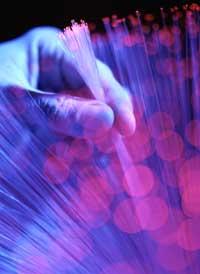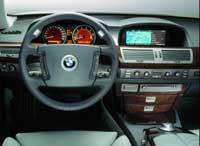40 years of fiber optic
2006/03/13 Rementeria Argote, Nagore - Elhuyar Zientziaren Komunikazioa

Optical fiber is obtained by the prolongation of glass or plastic. This fiber is transparent and flexible, and when you put the light on one end it is emitted to the other end. This feature is what is used for the transmission of information: electricity is emitted in the copper wire and light in the fiber optic.
The light flows from one end to the other of the fiber through internal reflection, which advances bouncing on the fiber wall. The information is encoded in pulses of light
The future by light
But at first the light did not come very far in the fiber. Fiber optics was presented to the scientific community in 1966 by young engineers Charles Kuen Kao and George Hockham. It was glass and they showed that it had a great future, but few believed them. A lot of information could be sent on that fiberglass, but a few meters from entering, half of the information had been lost.

It looked like an insurmountable obstacle. But there they realized that the loss of light was not a consequence of the glass itself, but of the imperfections of the material. From then on, his objective was the fiberglass with less imperfection. In the 1970s, the 'pure' glass was produced. And from there no one questioned the future of optical fiber.
The fiber optic they achieved at that time was, say, excessive: it was able to transmit more information than they needed. However, its use was immediate. The Internet was about to open up all over the world and fiber optics was the perfect support for the network of networks.
From copper to glass and plastic
The original optical fiber was glass, and currently the most used optical fiber is glass. But it is also made of plastic. Yes, plastic has a lower capacity and deteriorates at high temperatures. Depending on its use, however, the optical fiber of plastic can be more suitable for its lightness and for its low cost.

As for the copper thread, optical fiber is better in every way, except in the economic. The replacement of pre-existing copper installations by fiber optic is very costly, the cable itself is more expensive and are also many kilometers. In Japan, for example, they have already done so.
Fiber optics has also meant a breakthrough in cars. Keep in mind that there are more and more electronic components in cars. Therefore, they have many cables. So if the cables are fiber optic, you get a much lighter car: about fifty kilos less. The advantage is evident. Of course, this also greatly increases the price and, for the moment, only high-end cars carry optical cable. However, who knows, television and phone reach many homes through fiber optics, it is possible to reach all cars before schedule.
Published in 7K.




